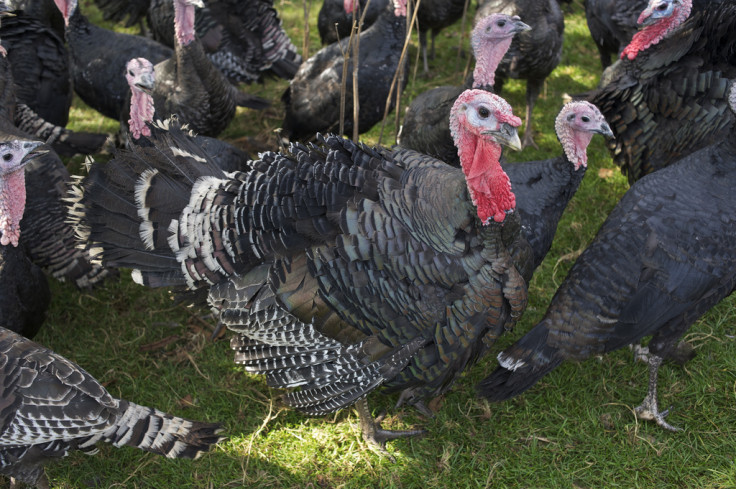Bird Flu Explained: Strains, Spread and Christmas Risk as Virus Identified on Yorkshire Duck Farm

A case of bird flu has been identified at a duck farm in Yorkshire, prompting the Department for Environment, Food & Rural Affairs (Defra) to cull 6,000 birds and update its guidance on identifying the virus.
Initially it was thought it was the deadly H5N1 strain, however, this has now been ruled out by Defra – the exact strain of the virus is currently unknown.
Britain's Chief Veterinary Officer Nigel Gibbens told the BBC that the strain is not dangerous to humans: "We know it's an H5 strain but not N1... On the basis of what we know of the strain to date, Public Health England has said that this strain does not present a threat to public health."
As a precaution, a 10km (six mile) exclusion zone is in place.
The announcement comes as Dutch authorities discovered a highly contagious strain of bird flu - H5N8 – at a farm in the Netherlands.
What is the difference between bird flu strains?
There are many different strains of bird flu, or avian influenza, and most are not infectious to humans. However, some – including H5N1 and H7N9 are – and can cause serious infections and global pandemics.
In birds, there are two types of avian influenza, one of which – Highly pathogenic avian influenza (HPAI) – is more serious and often fatal. The main symptoms of HPAI are a swollen head, discolouration of the neck and throat, loss of appetite, respiratory distress, diarrhea and fewer eggs being laid.

What are the Hs and Ns?
A and B flu viruses (types that cause illness) have two types of spikes that cover their surface, the haemagglutinin (H) and the neuraminidase (N). Viruses attach to the surface of cells by their H, while the N part infects the cell.
There are 17 different types of H in influenza A viruses – H1 to H17. There are nine different types of N (N1-N9). Each has one type of H and one type of N. All different combinations produce different results. For example the H7N9 strain that emerged in China last year does not make birds ill but proved fatal among humans.
Read more about the different types of H and N bird flus in The Conversation.
Should we be worried?
Defra has said the Yorkshire case poses little to no risk to humans: "The public health risk is very low and there is no risk to the food chain," it said. However, the head of the World Animal Health Organisation has said there could be a link between the UK and Netherlands cases.
Even if the strain of bird flu in Yorkshire is not infectious to humans, outbreaks can lead to global concerns because of its effect on poultry populations – it can seriously impact local and global economics and international trade. Most human cases of bird flu are the result of direct or indirect contact with infected live or dead poultry and there is no evidence to suggest it can spread by eating properly cooked food.
The main concern with bird flu and the reason for continued surveillance where outbreaks have occurred is the potential for it to change into a form that is more easily transmittable among humans.
Christmas turkey shortage?
As mentioned, there is no risk of bird flu being transmitted to people through eating properly cooked poultry. However, there could end up being a turkey shortage this Christmas as a result of the one case in Yorkshire. During the bird flu outbreak in 2006/2007, reports emerged of Christmas turkeys costing up to £100 as a result of the culls that took place.
There are several turkey farms near the Yorkshire case that could be at risk of infection. Farmer Jono Dixon told Sky News there is cause for concern: "We've got Christmas four weeks away and I know that these guys will be gearing up for the Christmas market.
"There's some big turkey farms in East Yorkshire as well as lots of turkeys produced in this area, and you know how that's going to affect them."
© Copyright IBTimes 2025. All rights reserved.






















